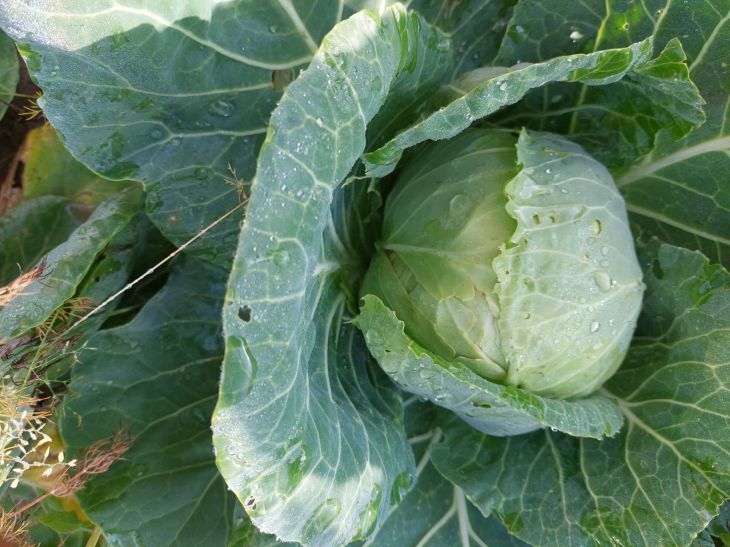Growing cabbage requires a lot of patience and care, especially if the goal is to grow dense, juicy heads.
One of the main problems that gardeners face is cabbage cracking.
Why do cabbage heads crack and how can this problem be prevented?
Causes of Cabbage Cracking
Cabbage heads cracking is usually caused by sudden changes in humidity.
After a drought, with heavy rains or excess water, the heads of cabbage begin to quickly gain weight, and the upper leaves cannot withstand the internal pressure, which leads to the appearance of cracks.

Cracking can also be caused by intensive growth of cabbage in the last stages of ripening.
Proper watering as the basis of care
One of the key aspects of preventing cabbage from cracking is proper watering.
Regular and uniform watering helps maintain a stable moisture level in the soil. It is best to water cabbage early in the morning or late in the evening.
Loosening the soil and mulching
Loosening the soil around the cabbage allows water and air to better penetrate to the roots, which helps maintain optimal conditions for plant growth.
Mulching also plays an important role. It prevents moisture from evaporating quickly from the soil, keeping it more evenly moist. Straw, peat or compost can be used as mulch.
Choosing the Right Cabbage Varieties
Some varieties of cabbage are more resistant to cracking than others.
Gardeners who encounter this problem may want to consider planting varieties such as 'Slava,' 'Globus,' or 'Copenhagen Market.' These varieties produce dense, crack-resistant heads.
Fertilizer control
Excessive nitrogen fertilization can cause the cabbage to grow too quickly, increasing the risk of cracking.
It is important to maintain a balance in plant nutrition, providing them not only with nitrogen, but also with potassium, which strengthens the structure of the heads of cabbage and makes them more resistant to external influences.
Regularly adding organic fertilizers such as compost or humus will also help maintain healthy cabbage growth.
Timely harvesting
Timely harvesting of cabbage is an important aspect of preventing heads from cracking.
It is important not to miss the optimal moment for harvesting, when the cabbage has reached its maximum size, but has not yet begun to crack.
Cutting in the morning or evening also helps keep it fresh and prevent damage.
Pest control
Pests such as cabbage flies or aphids can weaken plants, making them more susceptible to cracking.
To avoid this, you need to regularly inspect the plants and combat pests in a timely manner.
An effective and safe method of protection is the use of biological methods, such as predatory insects or organic insecticides.
Ensuring uniform growth
To prevent cracking, it is important to ensure uniform growth of cabbage. This can be achieved through regular plant care, including fertilizing, watering and loosening the soil.
It is also helpful to monitor weather conditions and, if necessary, protect plants from extreme weather events such as heavy rains or drought.
Application of additional methods
Some gardeners use a method of lightly cutting the roots of cabbage to prevent cracking.
This slows down the flow of water and nutrients to the head, which helps avoid sudden growth spurts. But the method requires caution and experience to avoid damaging the plant.
Earlier we told you how to care for peppers in July.








